Syn.: Cactus candelaris Meyen, Cereus candelaris Meyen
Family: Cactaceae Juss.
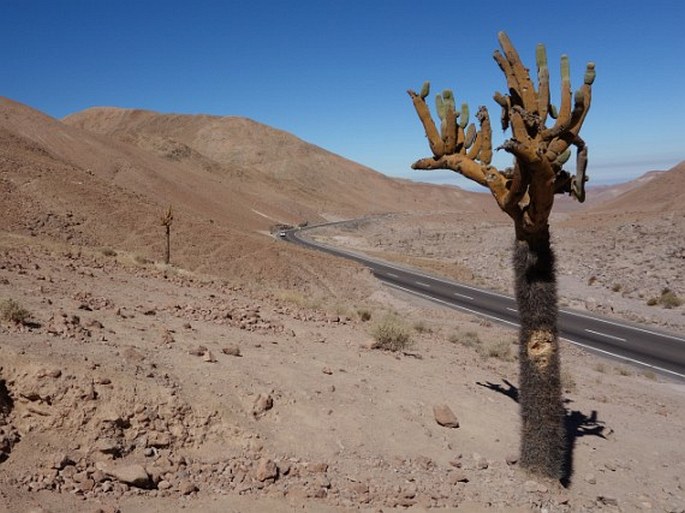
Distribution: Southern Peru (departments Arequipa and Tacna) and northern Chile (Tarapaca region). Two subspecies are recognized, the nominate and B. c. subsp. icaensis.
Ecology: It grows in extremely dry areas, on rocky slopes and in dry valleys, at elevations from 1000 to 3300 m asl.
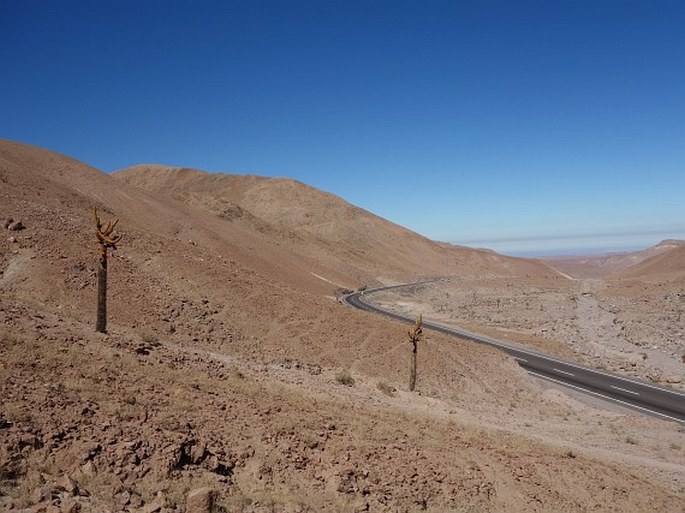
Description: Gigantic cactus with a distinctive columnar habit, up to 6 m tall. The stem is solitary, simple or branched in the upper part, with about 50 ribs, densely covered with brown spines, spines 20–50 per areole, 6–15 cm long. Branches erect or ascending, entirely spineless or with a few bristles. Flowers tubular, 8–12 cm long, outer tepals narrowly lanceolate, inner tepals broadly lanceolate, about 3 cm long, whitish to pink, nocturnal. The fruit is yellow when ripe, up to 7 cm long, fleshy, edible.
Threat and protection: This species is protected by the Convention on International Trade in Endangered Species of Wild Fauna and Flora (CITES).
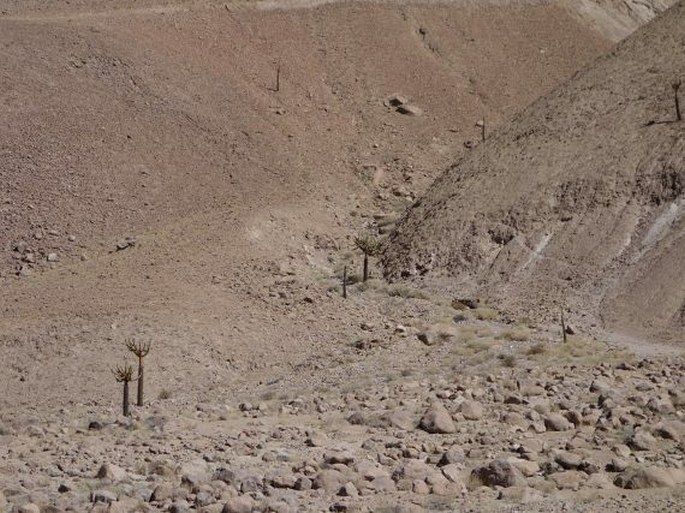
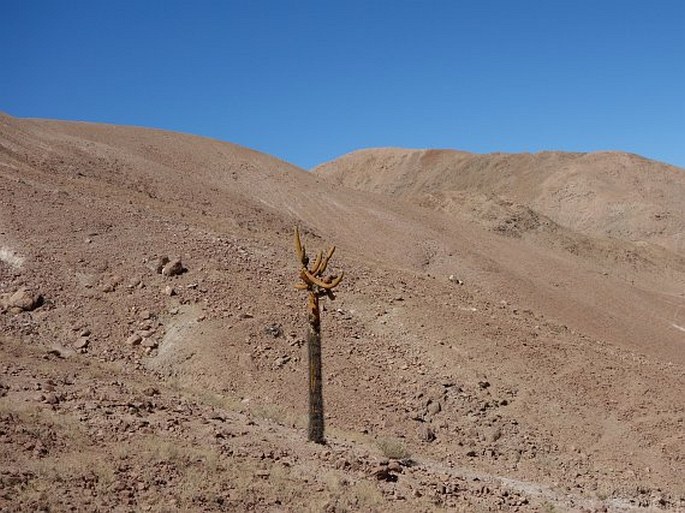
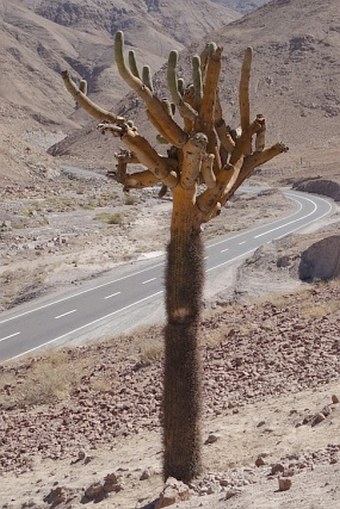
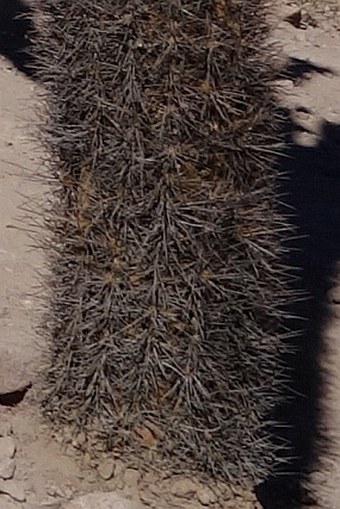
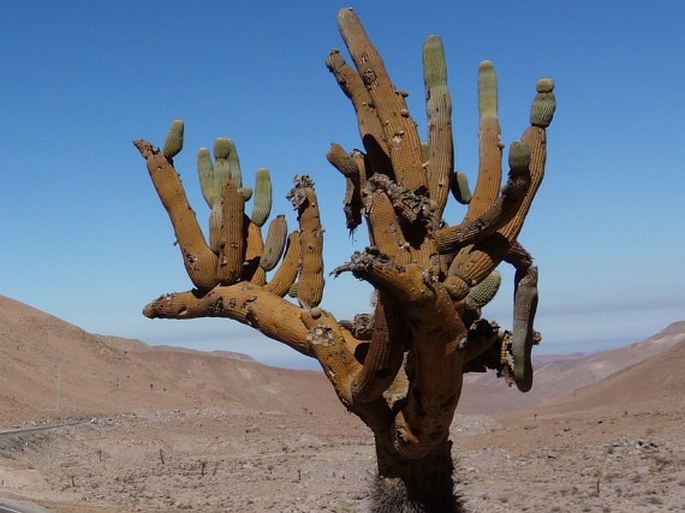
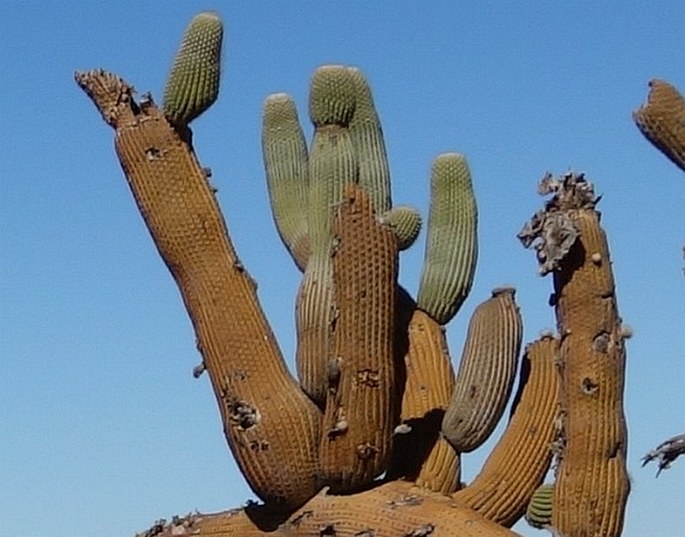
These images were taken in Chile, road from Putre to Arica (by Ljuba Procházková, 11. 10. 2013).


